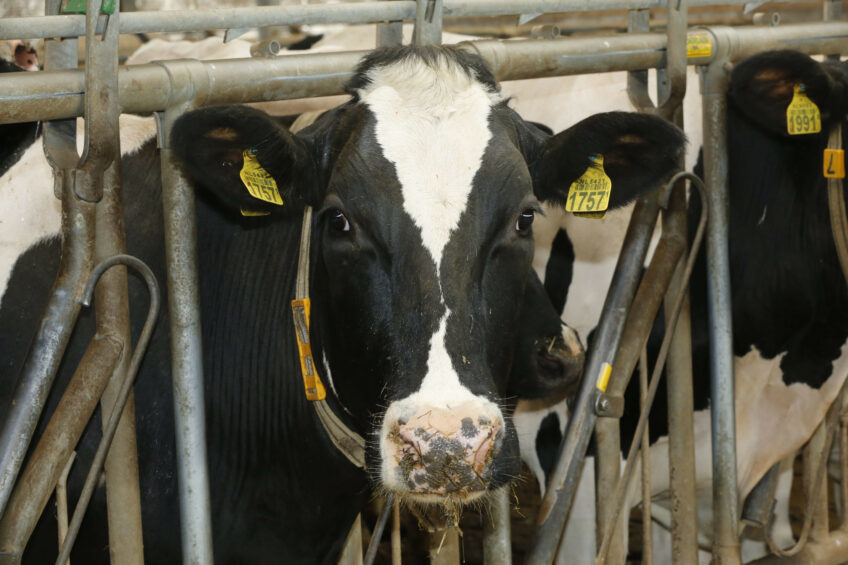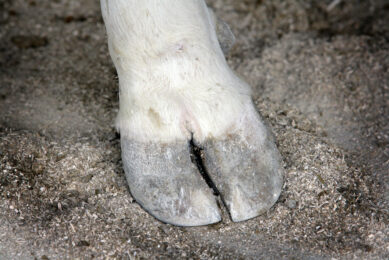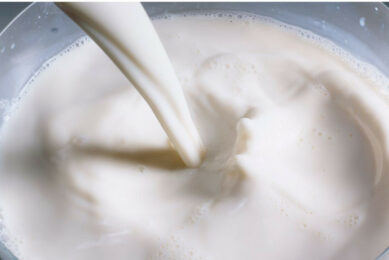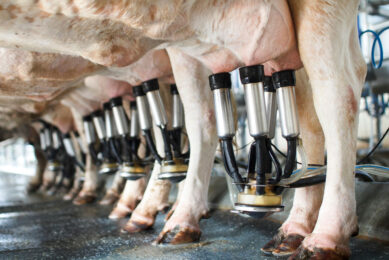Cow facial recognition: It is really happening

Just like humans, cows have their own set of unique facial features and these characteristics can now be read as usable data by technology to identify that specific animal.
According to Cainthus, it is the only company in the world that can facilitate visual recognition of cows and it has already made its first sale. Cainthus is a machine vision company based in Dublin, Ottawa, and San Francisco, which by using its own unique expertise can turn visual information into actionable data. Their focus is currently on how best to use this technology in agriculture even though its end use has greater and wider potential.
First commercial sale
David Hunt, a former corporate banker, is the co-founder of Cainthus along with his brother Ross and together they are committed to digitising agricultural practices. One of their major goals was to develop facial recognition technology for cows and, as David explains, they are right on track to do so.
David says: “As far as we know we’re the only company in the world that can ID a cow solely using visual recognition, so I can only tell you how we’re doing! “Today we have 97% accuracy in ID on an individual image, but by sheer weight of analysis our ID accuracy is effectively 100%.
“In relation to sales, we’ve already made our first commercial sale and installation. We’ll be doing our second commercial installation in January and are open for general business at that point. “In the near term we will be prioritising larger dairies of over 1,000 cows, as that is where the system makes its greatest impact.”
Commercial scale measurement
David confirms that their desire to introduce facial ID came from an earlier goal to improve commercial scale measurement. It was only after some research with sensors that he discovered what could actually be achieved. “We realised many years ago that most of the big problems in agriculture can be a result of a lack of commercial scale measurement,” says David.
“If you can’t accurately measure something, then you can’t improve it. So we then went to see what would be the cheapest way to provide commercial scale measurement for agricultural fields, which turned out to be imaging sensors. “Facial ID using those imaging sensors was a difficult next step to make the technology applicable to dairies.”
Robotics as a solution
But what has the future got in store for the application of sensors and new technology in agriculture? David sees robotics as a solution to a decreasing labour force. He adds: “The combination of advanced sensor data and analytics to interpret them will create a platform capable of making constant small interventions to ensure maximum productivity.
“The amount of interventions required combined with the cost of human labour means we are going to require low cost, robust farm robots to provide these interventions. “So if we want to make best use of what is currently going on with sensors and analytics, then we must use robots. So I suppose I personally see them as an inevitability given the current road the agriculture industry is on.”
Farmers are sceptical but excited
Technologies are being developed at a fast pace, maybe even faster than farmers can embrace them. But David says farmers are excited and sceptical about new technology. David states: “I think farmers are sceptical of new technology because of the amount of snake oil out there, like NDVI based crop analytics, rather than pace of development. “I’ve yet to meet a farmer who isn’t excited to use a new technology that demonstrably works. Most farmers I know are extremely progressive. “If a technology is a good technology, then it should be cheaper and easier to use than what it’s replacing as well as being better.” Using the facial recognition technology developed by Cainthus has great potential for farmers as the first customers are discovering. “We’ve installed on two farms currently, and yes, they actively use it. A 5% increase in feed efficiency is worth a lot to a dairy farmer, and we can contribute quite a bit more than that simply by letting you know when the cows stop feeding, enabling you to intervene earlier than otherwise possible.
“I think livestock is more readily applicable for robotics as you’re not asking these farmers to replace existing machines with robots, except for milking robots. With tillage, you’re asking a farmer to abandon the tractor or harvester, which is much harder.”
Mixed farms by 2050
It’s anyone’s guess what a livestock farm will look like by 2050, but David thinks farms will become more a mixed enterprise in the future. “I don’t think that there will purely be livestock farms by 2050. Farms will more likely be mixed, using agro-ecology style systems with many different crops and livestock. “For a farmer to operate in this environment they’ll need to be extremely comfortable with data, statistics, and robots as well as being ecological experts. “When I think of a 2050 farm, I struggle to see beyond it being one farmer and machines. But this is true of many industries by 2050. The best of farmers will run far larger farms than today, only involving themselves when the machines are damaged or confused and need some human assistance. “Think of Matthew McConaughey in Interstellar, except without the monocultures! Consumers are often naive when it comes to how a modern farm is managed, and also often have negative associations with robotics on a farm. It may be a tough learning curve to educate a farmer in new technology but how do we get consumers onside?” Hunt explains.
Robots are a good thing
Hunt is not sure if he can agree that consumers have negative associations with farm robotics. He has never seen or heard of this before. “Consumer naivety related to farming seems to centre on the misguided belief that livestock farming is cruel and that small farms are more environmentally friendly. So I don’t believe that any work is needed to let consumers know that robots are a good thing as I think most believe that anyway. But it is important to let them know just how much more environmentally and animal friendly farms can be if they further leverage robotics.
“It’s a pretty straightforward narrative, robotics enable individual animal and plant management on a large scale. The minute something goes wrong, the robots intervene far more rapidly an efficiently than a human could ever hope to, which is better for the animals’ welfare,” he concludes.












